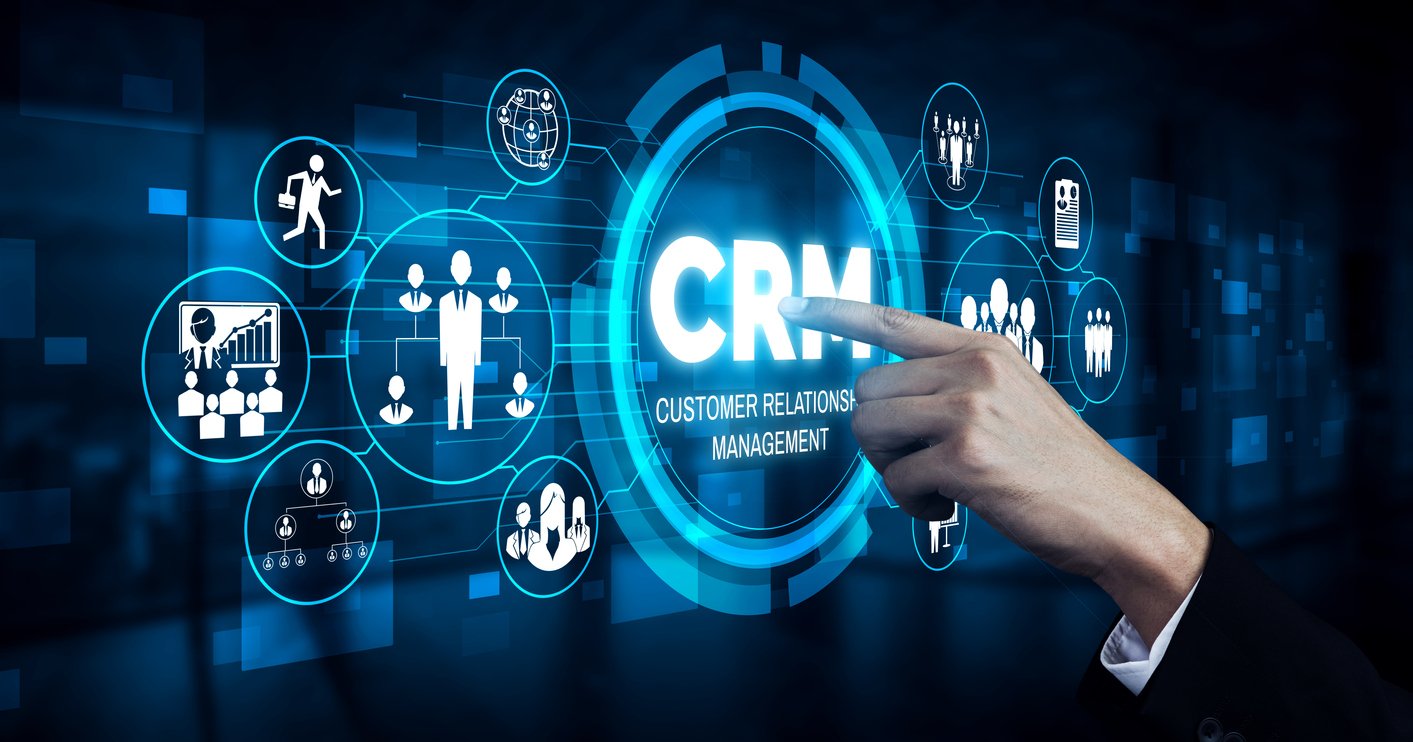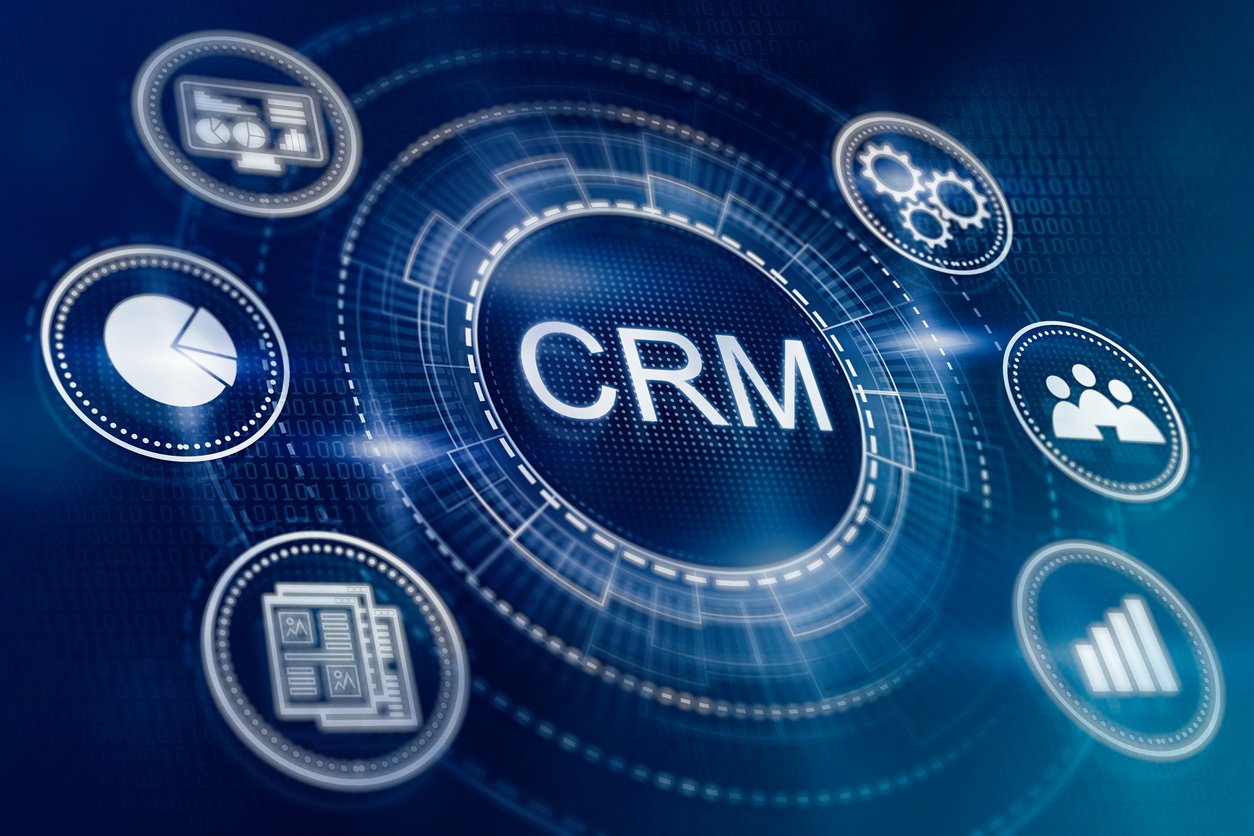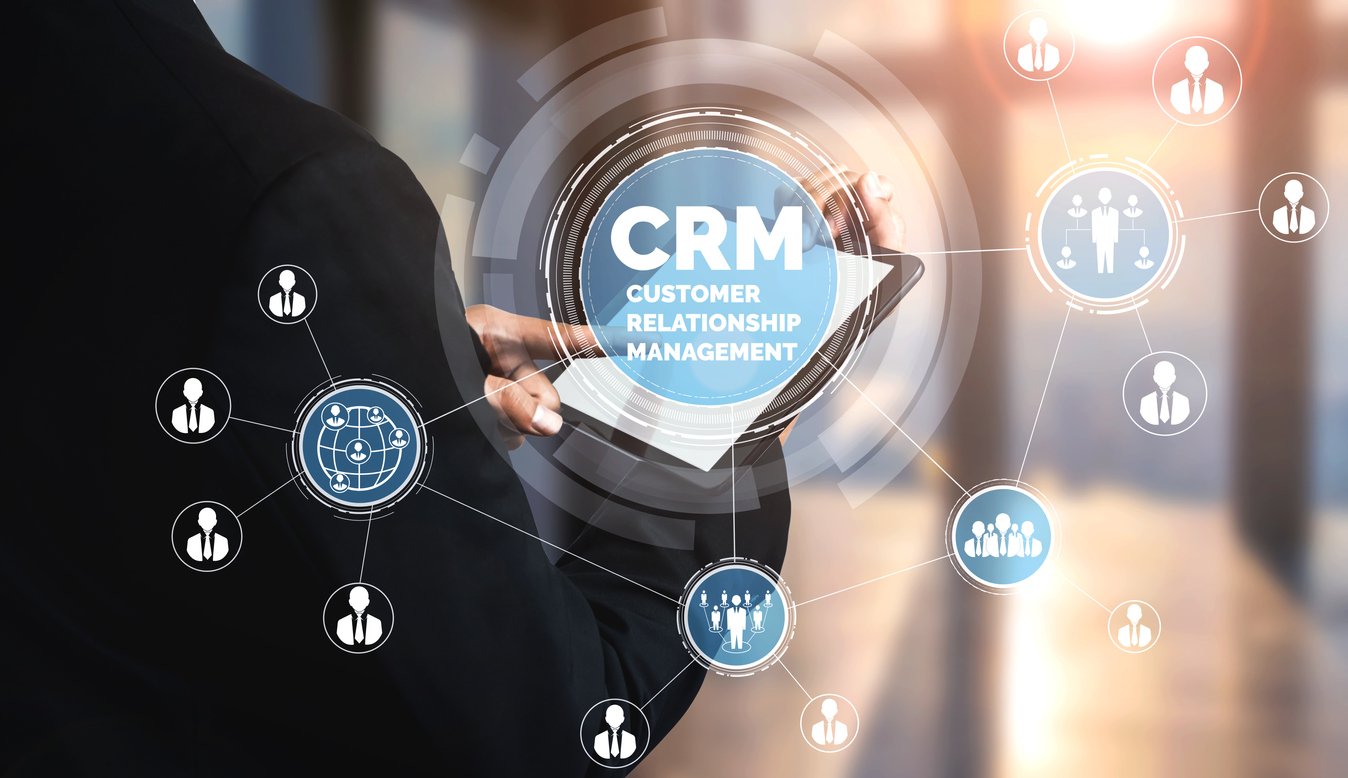
Building a Winning CRM Strategy: Tips and Best Practices
 Updated on
Updated on
 By Bradley Kovacs
By Bradley Kovacs
Bradley Kovacs
Bradley has been passionate about technology since childhood, starting with Microsoft Flight Simulator at age six. In college, he automated his data e...
learn more
Bradley Kovacs
Bradley has been passionate about technology since childhood, starting with Microsoft Flight Simulator at age six. In college, he automated his data e...
Table of Contents
Table of Contents
Today, we go on an exhilarating journey to learn the secrets of the powerful CRM strategy. This guide will equip you with the knowledge and tools to conquer the arduous realm of customer relationships and propel your company to greatness.
Imagine this: A battle-hardened organization armed with a CRM plan, standing tall against competitors while customers flock to its embrace.
With is this sorcery, you ask?
It's the power of a CRM strategy!
In this quest for success, we shall navigate through the lands of CRM strategies, discovering the different nuances and wielding them to our advantage. From examples of CRM strategies that have bewitched the masses to templates that bring structure to your CRM ambitions, we shall leave no stone unturned.
This guide explores:
- What a CRM strategy is
- Why it's needed
- The process for implementing strategies of CRM
- Step to creating a successful strategy for CRM
- Top CRM strategies to boost your business
Join us in this epic odyssey, where success awaits those who dare to harness the power of customer relationship management!
Let's dive in and conquer the CRM realm together!
What Is a CRM Strategy?
So we know what's on your mind, “What is a CRM strategy?”
A customer relationship strategy is an organization-wide plan to improve client connections and increase revenue utilizing particular technological actions. CRM software augments data while providing your team with insights and reports into consumer behavior, which in turn can assist in developing a successful strategy.
But where do you get all these insights from?
A proficient CRM strategy must include multiple touchpoints that target clients based on their needs and preferences.
Touchpoints may include but aren't limited to the following:
- Live chats
- Social media platforms
- Online shopping channels
- Email sign-up forms
These pre-established touchpoints lead prospects from a website through different sales funnel stages. When you amalgamate business data and CRM software, you analyze client behavior to develop extra touchpoints that improve customer satisfaction.
Importance of a CRM Plan For Your Business

In the bustling arena of modern business, a well-crafted CRM plan is not just a mere advantage; it's the secret sauce that propels company growth and ensures triumph among fierce competition.
As a centralized customer information database, CRM systems help companies manage client relationships and integrate with externally and internally organized contacts, including customers, leads, team members, and shareholders.
Businesses also utilize CRM software to perform the following functions:
- Create personalized DRIP campaigns
- Predict future sales via sales dashboard KPIs
- Offer tailored recommended products
- Guide customer service interactions
- Store contact information
- Manage touchpoints
- See the customer's lifecycle
- Monitor performance on the go through a native mobile app
The entire customer journey, from marketing to sales, digital commerce to customer support, can be seamlessly managed under one roof. It's like a well-choreographed dance, where customers glide effortlessly towards their purchases, treated to a personalized experience that leaves them feeling like VIPs.
A company's ability to track customer preferences and history, create a smooth CRM strategy, and eliminate those pesky hiccups along the way improves the chances of a successful implementation.
Implementing CRM Strategy for Your Business
If you want to take your business to the next level, implementing a CRM strategy is essential. This strategic endeavor is not to be taken lightly, as it can shape your organization's future in remarkable ways.
Imagine yourself standing at the crossroads of business management, faced with the choice between order and chaos. Embracing a well-defined CRM strategy paves the way for streamlined processes, enhanced client experience, and improved outcomes.
To better understand the impact, let's explore this table that highlights the benefits of implementing a CRM strategy and the pitfalls of neglecting one:
|
Advantages of a CRM Strategy |
Consequences Without a Plan |
|
Enhanced customer satisfaction |
Disoriented customers, lost in the shuffle |
|
Personalized service delivery |
Communication mishaps and missed opportunities |
|
Coordinated sales efforts |
Sales team confusion and inefficiency |
|
Data-driven insights |
Blind decision-making and missed trends |
|
Seamless communication |
Lost emails and fragmented interactions |
To embark on this journey, equip yourself with a CRM plan that aligns with your organization's goals and customer requirements. Understanding what a CRM strategy entails and exploring real-world examples helps lay the foundation for success.
5 Steps to Create a Successful CRM Business Strategy

Careful planning and a deep understanding of the business landscape are essential when creating a successful CRM business strategy. This section explores the five transformative steps that pave the way to victory.
Are you ready to take the first step on this adventure?
Let's jump in!
Audit Your Business
Before implementing a CRM strategy, conducting a thorough audit of your company is critical. This step lays the foundation for a successful CRM implementation by revealing your organization's hidden gems and areas for improvement.
Here's a table showcasing the critical component of a comprehensive company audit:
|
Component of a Business Audit |
Description |
|
Assess current processes |
Take a close look at existing workflows and processes. Identify areas of inefficiency, bottlenecks, or outdated practices that hinder customer engagement efforts. |
|
Review data management |
Your customer data is a treasure trove that holds immense potential. Evaluate data management practices, including security measures, storage, and data collection. Is it organized effectively? Are you capturing the correct information? |
|
Analyze technology infrastructure |
Assess the effectiveness, integration capabilities, and compatibility with marketing automation tools, customer support platforms, and other software already in your tech stack. |
|
Evaluate team skill resources |
Your CRM strategy relies on the capabilities and expertise of your team. Identify training needs, recruitment opportunities, or potential collaborations that can strengthen the implementation process. |
|
Measure customer satisfaction |
Collect and analyze customer feedback, satisfaction surveys, reviews, and interactions to gauge their sentiment. Leverage this data to align the CRM strategy with customer expectations to drive meaningful engagement. |
A comprehensive business audit empowers organizations with a clear understanding of their strengths, weaknesses, and opportunities for growth. It serves as a compass, guiding you towards strategic decisions that align with the CRM strategy and overall company objectives.
Define Your Goals
Now that you've audited your business and gained valuable insights, it's time to set sail toward your destination by defining clear and actionable goals for the CRM strategy. Like the compass guides sailors across vast oceans, these goals steer CRM implementation toward triumph.
It would be best if you asked yourself the following questions when trying to establish your company's CRM goals:
- What am I hoping to get out of a CRM system?
- Does the software provide features that'll be beneficial to my organization?
- How long would implementation take?
- What integrations do I need?
- How will I import existing data?
- Who needs access?
Utilizing SMART goals is a great way to ensure objectives are specific, measurable, achievable, relevant, and time-bound. This is an excellent way to ensure goals align with your business objectives while balancing implementation and strategy development.
Identify Your Target Customer(s)
To craft a successful CRM strategy, you must first identify your target customers, the key protagonist in a business's narrative. Understanding their behaviors, preferences, and needs is essential for delivering personalized experiences and building lasting relationships.
Here are a few things to look at when identifying your ideal target customers:
- Demographics: Start by defining ideal customer profile demographic characteristics. Consider factors such as occupation, education, income level, gender, and age.
- Psychographics: Dive deeper into the target audience's psychological aspects, including their lifecycle choices, attitudes, beliefs, and values. Understanding their motivations, aspirations, and pain points enables you to connect with them more profoundly and tailor messaging accordingly.
- Interests and behaviors: Studying online customer activities, such as social media engagement and purchasing behavior, helps identify common patterns and trends that can guide product offerings or marketing strategies.
- Buying patterns: Examine the customer's buying patterns to understand their decision-making process. Identify whether they are impulsive buyers, value-driven shoppers, or brand advocates. This helps uncover preferred purchase channels and explore opportunities to optimize the buyer's journey.
- Pain points and challenges: What problems are they trying to solve? Which hurdles do they encounter? These questions help you discover the pain points and challenge the target audience faces.
As you gather insights, update your customer profiles to ensure they remain relevant and accurate. Remember, the more you know about your customer, the better equipped you'll be to create personalized experiences that resonate with them.
Pinpoint Your Customer Journey
Understanding the customer journey is crucial for developing a CRM strategy. It allows you to map out clients' various touchpoints and interactions with your brand, enabling seamless experiences at each phase.
Let's explore fundamental steps in pinpointing the customer journey:
- Identify touchpoints: Look at social media engagement, support interactions, purchases, and website visits to gain insights into client interactions and expectations at each stage.
- Assess customer needs: Analyze customer needs, expectations, and pain points at each touch point to understand their goals and challenges to align your CRM strategy and provide personalized solutions.
- Optimize engagement: Streamline the customer journey, removing friction points to ensure a consistent experience and support.
- Leverage data and automation: Utilize customer data to gain insights into purchase history, behavior, and preference. Personalize interactions, offer customized recommendations and provide proactive support with automation tools.
- Continuous improvement: Regularly review and refine the CRM strategy based on changing expectations and market trends. Measure metrics, solicit feedback, and identify improvement areas to deliver exceptional customer encounters.
Pinpointing the customer journey gives you the data to anticipate client needs, deliver a personalized experience, and foster long-term loyalty. It enables teams to guide prospects smoothly through their interactions with a brand, ensuring satisfaction and driving company growth.
Understand Your Competitors and Your Positioning
Understanding your competition and positioning your brand is crucial to accomplish CRM strategy success. By gaining insights into their strategies and identifying your unique value proposition, you can differentiate your offers from others in the market.
Follow these steps to understand competitors and your positioning:
- Competitor analysis: Study competitors, their services or products, and unique selling points. Evaluate their strengths, weaknesses, and market share to identify opportunities.
- Differentiation: Define a unique value proposition and highlight what differentiates your brand from competitors. Emphasize your strength and how customer needs are fulfilled uniquely.
- Target audience segmentation and alignment: Understand the target audience and personalize messages to deliver content that meets their needs.
- Brand positioning: Develop clear and compelling brand positioning that communicates your organization's value, benefits, and competitive advantage.
- Continuous monitoring: Stay informed about competitor activities, market trends, and customer feedback; adapt and refine your CRM strategy to maintain a competitive edge.
Comprehending competitors and positioning your brand allows you to leverage your strengths while staying out of the crowd. This understanding also will enable you to craft compelling client experiences while building lasting relationships that increase customer lifetime value.
Top CRM Strategies to Boost Your Business

Now that you know the steps to create a successful CRM business strategy, let's look at top CRM plans to dilate company growth.
Whether you're a start-up or an established organization, implementing the correct CRM strategy can significantly boost your enterprise. From personalized interactions to data-driven insights, let's unlock the power of CRM and revolutionize your business's performance in the digital age.
Use Automation to Your Advantage
You can save money and time by automating those tedious, time-consuming administrative tasks with CRM automation. For example, you can use Ringy to funnel lead data into your sales pipeline.
Imagine your sales representatives having the time to do what matters: making sales. Automating sales processes is now possible; with more hours to invest in closing more deals and nurturing leads, your agents' productivity increases, and business expenses decrease.
Audit Your Customer Database Regularly
If your customer data is accurate and well maintained, whatever the goal with the CRM strategy becomes more attainable. Auditing a customer database ensures up-to-date and reliable information, enabling businesses to make more data-driven decisions.
Here are three types of datasets that appear in CRM software:
- Identity data - Name information, postal address details, personal information, preferred social channels, preferences, emailing details, permission, and suppression data.
- Quantitative data - Transactional information, online activity, social media engagement, customer support information.
- Descriptive data - Family details, lifestyle details, career details
- Qualitative data - Motivational information, opinion-based data, and attitudinal information.
Relating company goals with this simple CRM data classification process allows organizations to identify the critical data for growth. This assists business proprietors in understanding the value received from each customer's data attributes.
Publish Content That Adds Value and Drives Conversions
How can businesses entice customers to flock to their brand in a world where only a few companies achieve widespread recognition? The secret lies in embracing the art of captivating content.
Imagine crafting an engaging blog article post that positions your service or product as the ultimate solution to pressing customer inquiries. The world is your oyster when it comes to the array of content that can be offered to prospects and clients ranging from:
- Downloadable trend reports
- E-books
- Thought-provoking social media posts
Content goes beyond mere information; it serves as a bridge, connecting you with customers on a deeper level. Businesses establish themselves as trusted, approachable industry experts by producing compelling content. It's an opportunity to fortify the bond between you and your customers, making them feel valued and empowered by choosing your brand.
Create More Personalized Emails and SMS Outreach
The impact of personalization is staggering: A mere shift from a generic "Hi There" to a personalized "Hi [Firstname]" can make all the difference. In fact, customized communications drive over 70% of consumers to engage with the content.
Strengthening relationships with individual customers becomes effortless when you deliver tailored messages that resonate with their preferences. Utilize the wealth of data and resources gathered from each client to inform the specific types of communications that should be directed to different target audiences. Personalize the cornerstone of your CRM strategy, forging connections that have a lasting impression.
Additionally, there’s a new SMS legislation in place called the A2P DLC10 SMS Legislation. This legislation regulates SMS (Short Message Service) use for Application-to-Person (A2P) communications. A2P involves businesses sending messages to individuals via apps, covering notifications, alerts, and promotions. Its key points are:
- Purpose: A2P DLC10 SMS Legislation aims to standardize A2P SMS, ensuring responsible usage by businesses.
- Compliance: It mandates businesses to follow rules, including recipient consent, opt-out options, and lawful message content.
- Consumer Protection: The legislation safeguards consumers from spam by allowing opt-outs and setting message rules.
- Penalties: Non-compliance leads to fines and messaging restrictions for businesses.
For detailed information, visit Twilio's website, a reliable source for A2P SMS compliance and updates.
CRM Strategies Examples
With insights and CRM systems, businesses can inevitably improve their customer service. Depending on the target audience or product, users may receive more information from social media posts or educational blog posts—that is why data auditing is essential.
This information allows you to improve outreach efforts for existing and new prospects, increasing customer retention.
Let's dive into three CRM strategy examples to inspire your upcoming implementation.
Create Custom Analytics and Reporting Dashboards
Data is the lifeblood of your strategy. It's not enough to simply collect information about your customers; you need to turn that data into actionable insights. That's where custom analytics and reporting dashboards come into play. Here’s why these two dashboards matter:
-
Tailored Insights: Custom analytics and reporting dashboards allow you to filter through this data to extract the specific insights that matter most to your business.
-
Real-time Visibility: With custom dashboards, you can track key performance indicators (KPIs) and metrics in real time. This means you can swiftly respond to changing customer behaviors, market trends, or emerging opportunities.
-
Adaptability: No two businesses are exactly alike, and neither should their CRM strategies be. Custom dashboards can be tailored to your unique needs.
That said, how can you implement custom analytics and reporting dashboards? Let’s show you!
- Define Your Goals: Are you aiming to boost sales, improve customer retention, or enhance service efficiency? Your goals will shape the data you collect and how you display it.
- Choose the Right CRM Platform: Ensure your CRM platform supports custom dashboards. Many popular CRM systems offer this feature, allowing you to build, customize, and share dashboards with ease.
- Select Key Metrics: Common metrics include customer acquisition cost, customer lifetime value, churn rate, and customer satisfaction scores.
- Design User-friendly Dashboards: Keep your dashboards user-friendly. Visual elements like charts, graphs, and tables should be clear and easy to interpret. Consider color coding to highlight critical data points.
- Automation: Set up automated data feeds to keep your dashboards up-to-date. This minimizes manual data entry and ensures accuracy.
-
Regular Review: This might be a weekly team meeting or a monthly executive report. Regular reviews will help you stay on top of your CRM strategy's performance and make necessary adjustments.
Regular Review: This might be a weekly team meeting or a monthly executive report. Regular reviews will help you stay on top of your CRM strategy's performance and make necessary adjustments.
Customer Service Team Integration
Undoubtedly, sales CRM software empowers your sales team, but the marketing department also benefits. However, it is vital to involve customer support staff in the loop to optimize performance.
Thankfully, this integration is seamless. Your CRM system effortlessly shares vital information about client interactions and successes from the sales and marketing team with the help desk. This ensures swift identification of any issues and enables prompt resolutions.
Imagine the frustration of being placed on hold, transferred between helpdesk agents, and repeatedly explaining your concern. This subpar service is a common CRM challenge, but you can avoid it.
Embrace a CRM solution, like Ringy, instead. With a unified, cloud-based CRM interface, helpdesk teams have the software and necessary tools to take on the world.
Customer Interaction and Behavior Tracking
At the core of any effective CRM strategy lies the fundamental principle of understanding the customer.
CRM software eliminates the guesswork by tracking how prospects discover and interact with an organization online. It enables a wealth of data on potential leads and deals still in the nurturing process.
Here are some examples of the valuable insights CRM software provides:
- On which social media platform is Emma most likely to discover your brand?
- Did John engage with your recent webinar invitation or skip it?
- Which product did Sarah click on?
Once you have captured the target audience's attention, CRM software takes it one step further, allowing you to delve deeper into their behavior and preferences.
It goes beyond the surface-level contact details, providing valuable insights into their recent brand interactions, past orders, and overall spending patterns. This knowledge becomes your superpower, enabling personalized marketing efforts by offering customized discounts that perfectly match your buyer's unique preferences.
CRM Strategy Template
Customer success, marketing, and sales team of all niches, sizes, and industries benefit significantly from a CRM strategy template. If you want to plan and execute a successful CRM strategy, this approach is the most comprehensive yet simple method.
A CRM strategy template allows the team to concentrate on the most important tasks by disentangling the strategy creation process.
Identify
The first step in crafting a successful CRM strategy is to "Identify" your customers. This involves not only collecting basic information like names and contact details but also understanding their preferences, behaviors, and purchase history.
By creating detailed customer profiles, you can tailor your products or services to meet their specific needs and preferences. Additionally, this information can be used to segment your customer base, allowing for more targeted marketing and personalized communication.
Differentiate
Once you've identified your customers, it's essential to "Differentiate" them based on various criteria. This can include factors such as their buying frequency, the value they bring to your business, or their level of engagement. By categorizing customers into different segments, you can prioritize your efforts.
For example, you may choose to focus on retaining high-value customers or re-engaging with those who haven't interacted with your business in a while. Tailoring your approach to different customer segments can significantly improve your CRM strategy's effectiveness.
Interact
"Interact" is a key element of any CRM strategy. It involves actively engaging with your customers through various channels, such as email, social media, or even in-person interactions. Effective communication is essential for building and maintaining strong relationships.
Regularly reaching out to customers to provide updates, address concerns, or offer promotions not only keeps them engaged but also shows that you value their business. Automation tools and personalized messaging can streamline this process and make interactions more efficient.
Customize
The final component of the CRM strategy template is "Customize." This means tailoring your products, services, and interactions to meet the unique needs and preferences of each customer.
Personalization is a powerful tool for building customer loyalty and increasing satisfaction. It can involve offering personalized recommendations, creating customized marketing campaigns, or providing exclusive offers to individual customers. Utilizing data and analytics is crucial in this step to ensure that your customization efforts are effective and well-received.
With these attributes in place, teams will know what to focus their energy on, and you'll be able to monitor their progress toward those goals.
FAQs

Curious about CRM strategy? Look no further! In this FAQs section, we've got you covered with answers to the most common questions about CRM strategy.
How Do I Know if My Company Needs a CRM Strategy?
Any organization looking to improve its customer and sales operations should consider developing a CRM strategy.
What Is the Best CRM Strategy?
A CRM strategy is as bespoke as your business. No surefire method works for everyone, so you'll need to adjust and test your CRM strategy to find inconsistencies or areas for improvement. This helps you tailor the software to the business's specific requirements.
Do Only Large Corporations Utilize CRM Software?
This may have been the case in the past, but it is no longer valid. With the introduction of cloud-based CRM software, small businesses can now access excellently priced solutions that help them scale and grow.
CRM Strategy - Final Thoughts
A well-executed CRM strategy can be a game changer for businesses looking to thrive in today's competitive landscape. Leverage CRM software to understand customers better, personalize interactions, streamline processes, and drive overall growth.
However, implementing a successful CRM strategy requires the correct solutions and tools.
As a leading CRM solution, Ringy offers a comprehensive platform to manage customer data and scale operations effectively. It has robust features, an intuitive user interface, and an easy onboarding process to knock your socks off. Ringy gives you a centralized customer information database and automated workflows while optimizing sales and marketing efforts.
Don't miss the opportunity to revolutionize your customer relationship management. Take a step towards success by integrating Ringy into your CRM strategy.
Start your journey today and request a demo to experience the power of seamless customer data management and operational efficiency.

Skyrocket your sales with the CRM that does it all.
Calling? Check. SMS? Check. Automation and AI? Check. Effortlessly keep in touch with your customers and boost your revenue without limits.

Take your sales to new heights with Ringy.
Sales in a slump? Ringy gives you the tools and flexibility you need to capture leads, engage with them, and turn them into customers.
Subscribe to Our Blog
Enter your email to get the latest updates sent straight to your inbox!
Categories
Related Articles




































































































